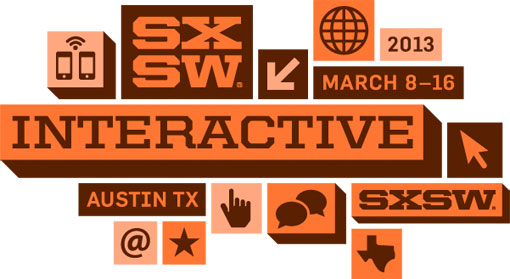I attended my first SXSW Interactive this year, 26 years after the conference was founded. It was a much bigger event than I expected, but as the days progressed, I found SXSW to be approachable and manageable. The key for me was to lower my expectations that I could experience the complete south-by. You can only experience your own personal SXSW and it’s a sliver of the whole.I attended a bunch of panels, sessions and some of the keynotes. It was a decidedly mixed bag of interviews and presentations, with some thoughtful ideas and some rubbish. The presenters that prepared their materials had more to say than the panels and interviews. Interviews seem to be for executives and the semi-famous who couldn’t be bothered to actually prepare something and just wanted someone to ask them questions that they had answered countless times before.
Bruce Sterling, the science fiction and cyber-punk writer who is the usual closing remarks ranter at SXSW, made the obvious point that the PC is dead, and that he was amazed that the personal computer had emerged and died within his lifetime. He noted that there wasn’t a single session or trade show booth that talked about PCs or even addressed them. No PC software, no PC peripherals, no Michael Dell. The PC is dead, rest in peace. His remarks are worth a watch (2, 3).
To this point, many of the sessions I attended were focused on design (devices, applications, websites), user experience and responsiveness. Responsiveness, an approach to building websites where content (layouts, media, words) can auto-magically adjust on the fly to fit a range of screen sizes and resolutions, is a problem for people right now. The devices used for consuming content has changed dramatically in a short amount of time, and the workflows for companies and agencies have not adjusted yet to accommodate the fact that people are building websites needs to assume that people are using tablet, phablets, phones, TVs, slates, and whatnot more than desktop computers.
Brad Frost gave the most succint presentation on responsiveness in his talk “Beyond Squishy: The Principles of Adaptive Design,” which he posted on his blog. Brad’s point is that responsiveness is just the tip of the iceberg and we need to start building sites that are truly adaptive.
Another thread at the show, illustrated by the plethora of 3D printing startups and technology, is that we are going to be addressing the physical world more explicitly using our digital tools, toys and trappings. I think this is long overdue and a welcome transition. For too long the digital class has been fixated on a purely virtual future. We live in the real world and I think we’re moving towards a phase where we experiment with how to mix our virtual capabilities with physical realities.
Golden Krishna gave a much-anticipated presentation on his argument that the best user interface (UI) is no interface. He gave many examples of “upgrading” products with unnecessary computing interfaces (e.g. putting Twitter on a car’s dashboard, or using a smartphone app to unlock car doors). We should be designing user experience to be seamless and as simple as possible, taking out steps using technology if possible, and not forcing the issue. Many people made the point that we need to have our content prepared before we move into graphical design (content first).
Alex Morris of Adobe made the good point that we don’t need ALL the content finished before we design, but we should have indicative content ready so that designers can create UI that fits the message. He mentioned at the end of his presentation that Adobe is working on new tools that will help web professionals integrate content into their workflows.
Phil Lilin, the CEO of Evernote, made an interesting and aggressive case for working on your true passion, and that there is no exist strategy for your life’s work. His company isn’t worried about consistency across the 26 separate applications that they’ve built and support for the various platforms that are out there. They try to make each application the best experience possible for the given device and expect that consistency will flow out of that focus. Great products aren’t neutral, they have a point of view. If you’re trying to please everyone, nobody is thrilled. They don’t focus on the competition and consider all other companies as either potential partners, or not worthy of attention. He wants his company to value the Culture of Design (experience first), as well as the Design of Culture.
Scott Belsky, CEO of Behance, sees a number of challenges for creatives. First, he thinks the long tail is backfiring. Is there too much specialization? Creatives need to overlap their interests and experiences. Therefore, Behance can help by hosting portfolios that promote topical overlap across graphic design, photography, architecture, print, web, etc. Second, we’ve empowered the masses without discernment, with critical mass gaining influence vs. the credible mass. We should assign weight based on influence and move beyond reckless crowd sourcing. Third, when attribution is not supported, opportunity is lost. Enable attribution, and the creative class can be discovered more easily and fairly, and referrals to deserving talent become part of the fabric of the system. Solving these challenges can create a path to Creative Meritocracy.
Back to Sterling’s closing remarks, which were expansive and provoking to say the least. He made the case that our industry’s mantra that disruption is good and necessary may be misplaced and should be examined. With disruption, we are killing what used to exist. We should at least have the decency to own up to it, and need to muster the moral fortitude to eat what we kill.
SXSW is about looking forward. I think there is an opportunity to look over our shoulders and learn from how we’ve arrived at the present so we can make more informed decisions as we plunge into the future. There may be a SXSW presentation proposal in there somewhere.

